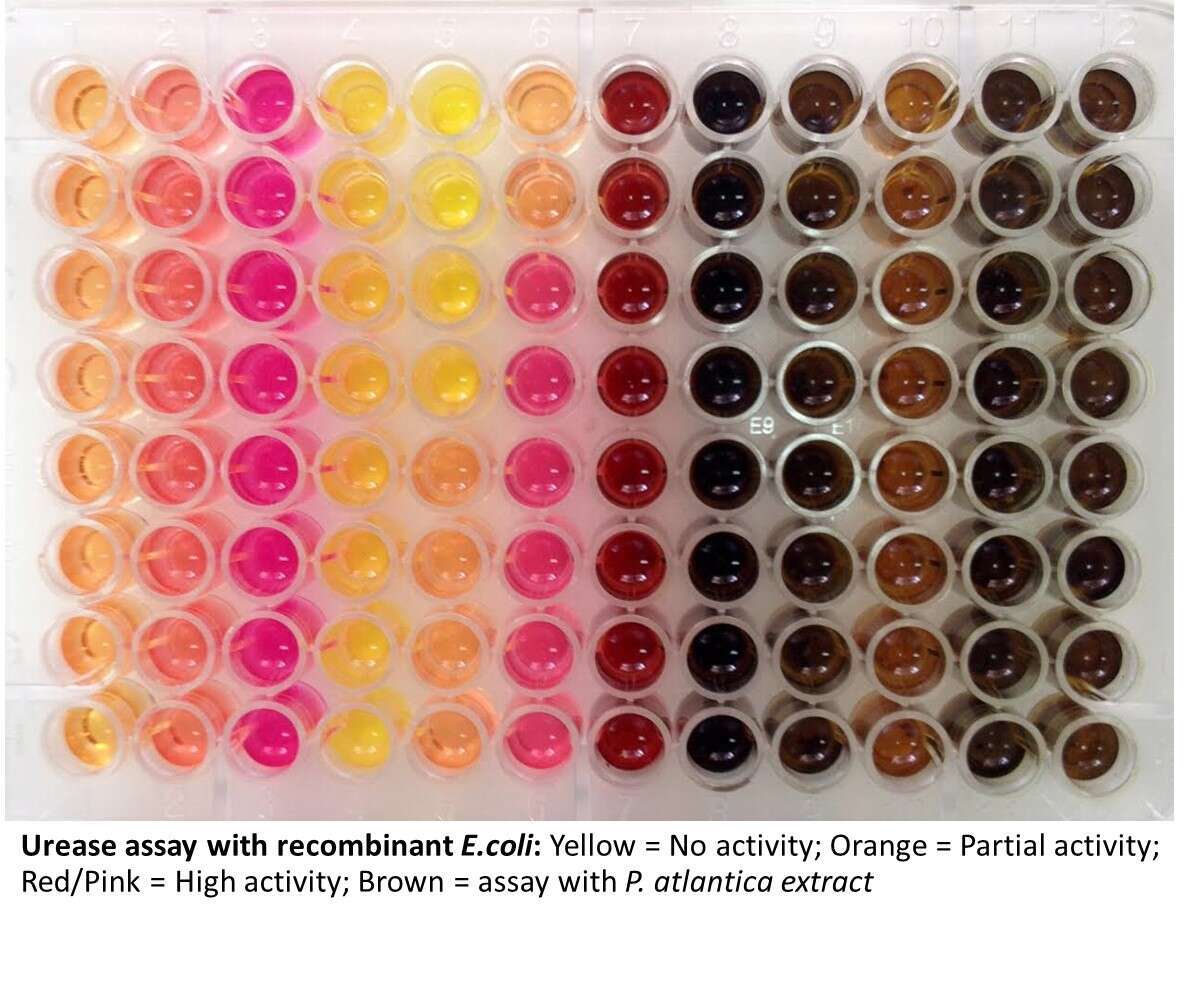
A low-cost, simple high throughput method for screening native Helicobacter pylori urease inhibitors
2Evolutionary and Environmental Biology, University of Haifa, Haifa, Israel
3Clinical Microbiology Laboratory, Baruch Padeh Medical Center Poriya, Tiberias, Israel
Helicobacter pylori is a gram-negative micro-aerobic bacterium that reside in the human stomach, and currently the most frequent and persistent bacterial infection worldwide, with up to 84% of the population positive in some countries. Although many of the infected are a-symptomatic, H. pylori infection is a strong risk factor for active gastritis, peptic ulcers, mucosa-associated lymphoid tissue lymphoma, and gastric cancer, being the fifth most common cancer and the third highest mortality rates. Helicobacter pylori infection was also correlated with low iron and vitamin B12 levels.
Current Helicobacter pylori treatment is done by administrating a `cocktail` of antibiotics and proton pump inhibitor. Nevertheless, antibiotics resistance isolates are isolated at an alarming rate, suggesting an alternative treatment is urgently needed. Urease inhibitor offer a promising option.
The urease enzyme is essential for the survival and colonization of the human stomach by H. pylori. Urease inhibitors were previously suggested as remedy but lack of convenient screening system have hampered the identification and characterization of such. We have developed a rapid screening method based on E. coli expressing a recombinant version of the H. pylori urease. We used this tool to screen plant extract for their urease inhibiting properties, focusing on such known in the traditional medicine for treating stomach problems and such known as GRAS. Using this method, we were able to identify the methanolic extract of Pistacia atlantica as a potent urease inhibitor. This extract was further tested on clinical isolates of H. pylori, including such with multiple antibiotic resistance, and was found to be effective in preventing the growth of such.


Powered by Eventact EMS